Metal components are often the backbone of most modern inventions such as automotive components and furniture constituents.
However, to come up with the finished metal constituent, a processing technique must be employed and tube stamping reigns supreme.
What is Metal Tube Stamping?
Tube stamping is a relatively modern process specialized to transform metal sheets or components into cylindrical components with unique designs.
Unlike older technologies, this metalworking technique guarantees you up to 30% cost efficiency.
Tubular Stamping Process
One of the many reasons behind the universal prominence of tube stamping is its unrivaled ability to generate high-quality components with intricate designs. To get the best of this metal stamping technology, you must comprehend its phased operational process.
· Material Selection
To kickstart your operation, weigh the option of metallic materials available to you and their suitability to your respective application. Some of the prominently utilized materials include copper and steel. Your selection should be based on the material’s strength, budget, and desired final shape.
· Blanking
Once you have settled on the best metal sheet, it is time to generate a blank, which is typically U-shaped. This blank is formed by shaping your metal sheet into a cutout that acts as the base of your tubular component.
· Cup Formation
Subsequently, your formed blank is driven into a specially designed die where it is pressured to assume the die’s shape. Typically, the die utilized is cup-shaped meaning that your blank assumes a cup-like shape.
· Piercing
When looking to achieve a complex tubular design, you might be necessitated to subject your blank to an additional die. This die will leave your workpiece with tubular piercings or flanges. However, this step is optional.
· Hydroforming
This pivotal step sees a high-pressure fluid driven inside your formed cup-like component. This fluid forces your component to assume the die’s shape and dimension thus leaving you with a tubular metal constituent.
· Finishing
Ultimately, your formed workpiece is subjected to a trimming process, which seeks to crop out any excessive material. Alternatively, the workpiece is taken through other finishing processes to improve its quality and smoothness. These processes may include cleaning and deburring.

Advantages of Tube Stamping
Tubular stamping permits you to come up with high-performing metal constituents and equipment cheaply and conveniently.
This established technology promises a myriad of indispensable rewards that include:
· Up to 30% more Affordable
Other metal processing technologies are likely to cost you more since they are relatively slower and may result in material wastage. Tube stamping on the contrary guarantees minimal or zero material wastage as well as a faster processing timeline. This makes it comparatively cost-efficient.
· Can Achieve Complex Shapes
Tubular stamping can install intricate cylindrical holes, flanges, or even bends into your workpiece cheaply and accurately. It does not necessitate supplementary processes to achieve these intricate and complex designs.
· High Strength to Weight Ratio
Tubular stamping generates high-quality constituents characterized by strength and lightweight. This is because it does not interfere with the structural integrity of your metallic workpiece.
· Better Surface Finish
Products or components processed using tubular stamping hardly necessitate supplemental processing. This is because this stamping technique achieves smooth finishes on most occasions.
· Faster Production Rate
If you are looking to machine numerous components within shorter timelines, tube stamping is the technique to go for. This process allows you to produce relatively larger workpieces in comparatively less time.
· Minimal Material Wastage
This process practices nesting and this greatly reduces the amount of metal material rendered wasteful. This does not only prove to be profitable but it also shrinks the amount of wastage deposited on the environment.
· Good Dimensional Accuracy
Components produced via tubular stamping are likely to fit into your parent system or machinery with great ease since they are of the right dimension. This is particularly important since it also contributes to reduced wastage.
Tube Stamping Techniques
Die Stamping
Die stamping requires you to feed your metal sheet into a specialized die before pressing it using a specialized press. This results in the generation of a custom-made component whose dimension and shape resemble that of the die.
Usually, this technique reigns supreme when it comes to producing large amounts of parts that must demonstrate similar qualities and dimensions.
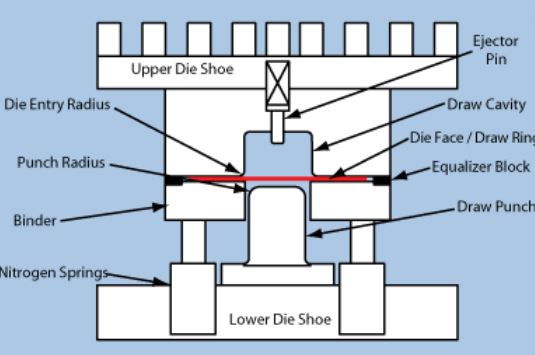
Punching
Punching is a tube stamping technique often exploited to create essential features like attachment points and ventilation holes in metal pieces. This method exploits a die set and a punch to install the tubular features on your workpiece. It requires you to have a punch press, which leaves you with a slug, which you can recycle.
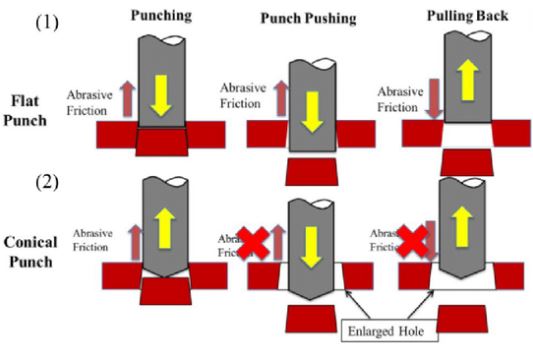
Deep Drawing
This technique is primarily revered because it generates smooth-surfaced components that are characterized by high quality and aesthetic value. Deep drawing leaves your metal sheets with deep tubular cuttings since it relies on punch forces. It also relies on a die to impart uniquely shaped cuttings into your workpiece.
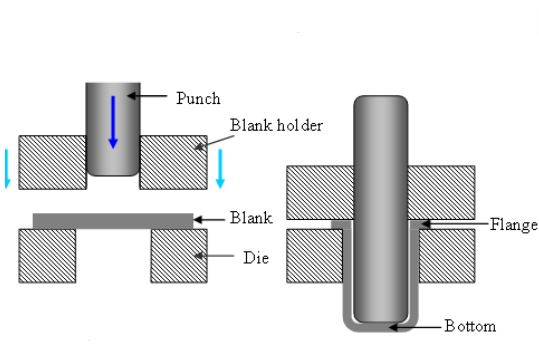
Coining
This technique is utilized to stamp crisp details or features on your metal sheet and it accomplishes this by exploiting compressive force. Coining can also be utilized to polish details already engraved in your workpiece or even refine their surfaces. One good example of coining is its employment in polishing pre-installed tubular holes in metallic components.
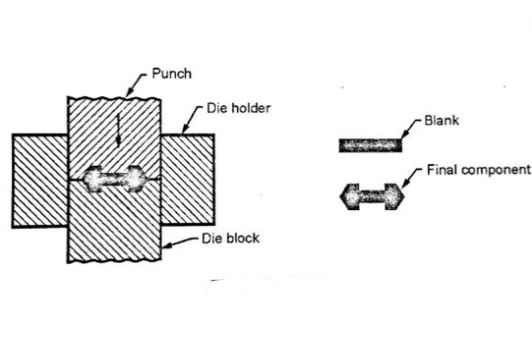
Blanking
Blanking is essentially utilized to create preforms or blanks that form the basis for your final metallic components. This technique simply requires you to cut a smaller metal sheet from a larger sheet prior to subjecting the resulting piece to additional tube stamping operations.
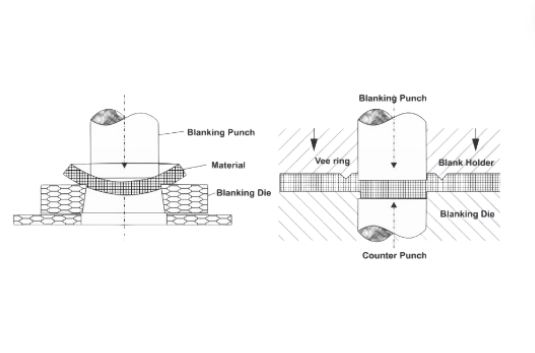
Bending
Bending makes it possible to install essential features on metal components such as pipe fittings. It necessitates the preferential application of force at certain points of your metal sheet resulting in controlled curling or curving. Bending leaves you with tubular metal components with intricate shapes such as U-bends and elbows.

Flanging
Flanging is principally exploited to install funnel features or attachment points on your metallic parts. This process simply leaves your tubular component with an outward lip, which makes it easy to attach to other components. To achieve the right dimension of the flanges, you might need to perform several flanging operations.
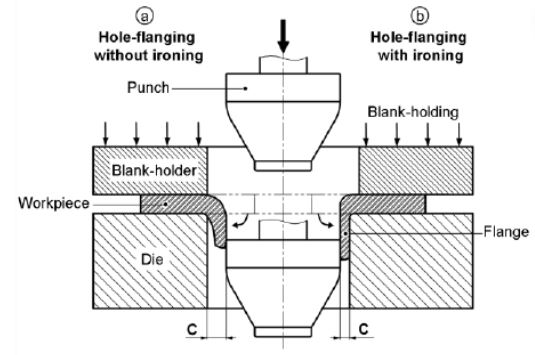
Embossing
Embossing is a tubular stamping method designed to engrave decorative patterns, generate gripping surfaces, or reinforce the structural integrity of specific points. This process requires you to squeeze a press on your workpiece thus imprinting the press’s pattern on your tubular component.
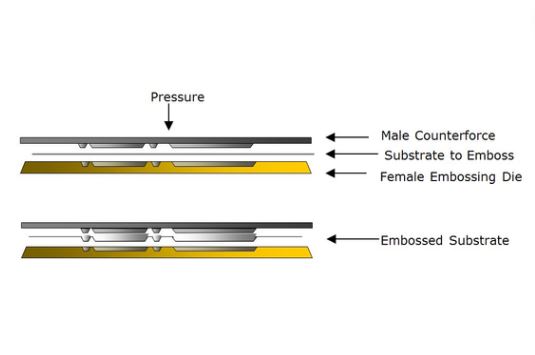
Tubular Stamping Materials
- Steel: Despite being naturally dense, steel is highly exploited to produce components that necessitate tube stamping. This material is also relatively affordable making it a popular choice for products ranging from simple bicycle components to complex aerospace parts.
- Stainless Steel: Stainless steel typically features chromium, which elevates its mechanical features. This makes it perfect for manufacturing parts that must exhibit a certain level of magnetism, attraction, and corrosion resistance. This material is, however, comparatively costlier.
- Copper: Copper comprises a protective film, which makes it resistant to corrosion and aesthetically pleasing. This coupled with its natural softness, makes it a suitable material for tubular stamping. Copper can also be stamped in its alloy form thanks to its ductility and ability to assume different shapes.
- Phosphor Bronze: This alloy is renowned for its castability and impressive mechanical properties making it a great fit for most tube stamping operations. Phosphor bronze stands out primarily due to the concentration of phosphorous, which makes it virtually fluid when heated.
- Brass: Brass is primarily machined using technologies like tube stamping to produce essential components and equipment including locks and medical constituents. It is generally comprised of zinc and copper. Components produced by stamping brass are characterized by a decorative appearance and good thermal conductivity.
- Aluminum: Aluminum stands out due to its relatively lightweight making it the perfect material for tubular stamped components with a high-strength-to-weight ratio. Its silvery-white appearance also gives it an aesthetic appeal appreciated by manufacturers of most components and equipment.
- Beryllium Copper: This material is primarily utilized to manufacture tube-stamped parts for aircraft and other industries that necessitate a higher stress threshold. This includes engine components and bearings. Beryllium copper is revered thanks to its compatibility with precipitation hardening as well as corrosion resistance.
- Titanium: This low-density material is greatly favored when it comes to manufacturing tube-stamped parts for nuclear and aerospace industries. Its hardness may however limit its stamping ability hence it is not as popularly exploited as some of the other materials mentioned before.
Tube Stamping Equipment
The vast array of tubular stamping equipment at your disposal today ensures that you can accomplish varying stamping operations with the utmost precision. These machines include:
- Stamping Press: This machine takes your blank and deforms it in a die. The stamping press then applies pressure on the deformed blank forcing it to assume your die’s tubular shape.
- Punch Press: The punch press is quite prominent and it simply imparts tubular cuttings in your workpiece by punching it at designated points. You can opt for a hand-operated punch press or a computer-controlled one. The most commonly utilized punch presses are:
- C-Frame punch press.
- Portal frame punch press.
- Clicker Press: This machine is custom-made to impart tubular shapes in components made from soft materials. The clicker press is commonly exploited to produce parts for manufacturing shoes and wallets among other products.
- Gap-Frame Press: This tubular stamping machine allows you to access the forming area from three sides. This is because its frame resembles the letter ‘C’. However, the use of the gap-frame press is limited to components that require a smaller bed size and a lower stamping force.
- CNC Turret Punch: This tubular stamping machine is specialized to insert numerous tubular cuttings in one or several components simultaneously. It comes equipped with the most innovative computerized operation mechanism making it fast and economical.
- Open-Back Inclinable Press: The open-back inclinable press is characterized by an inclined back, which makes it easier for you to extract finished parts with the aid of gravity. This tube stamping machine relies on either a single gear or a flywheel to make the cylindrical insertions.
Common Tubular Stamping Applications
Tubular stamping has been the hidden champion making it possible for you to access essential components like furniture supports and automotive components. This technology is presently responsible for the production of:
- Automotive Components
- Furniture Components
- Construction Components
- Household Appliances
- Air Conditioning Components
- Agricultural Equipment
- Sporting Goods
Conclusion
Tubular stamping has definitely played a significant role in the generation of components or tools that you utilize regularly. This could be your bicycle’s frames or even your furniture’s legs.
This technology knows no limits and its significance continues to be realized in industries ranging from household appliance manufacturing to the aerospace industry.
For all your metal fabricated tube parts from China – contact KDM now.
More resources:
The Ultimate Guide to Brass Stamping – Source: KDM




